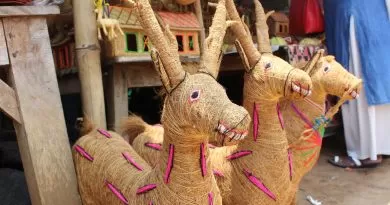Twin cities of Odisha – Facts about Bhubaneswar and Cuttack

Bhubaneswar and Cuttack are referred to as the ‘twin cities’ of Odisha, because of their close proximity in terms of distance. Both categorised as Tier-II cities, form a metropolitan with two separate municipal corporations.
Bhubaneswar
Bhubaneswar is the capital of the eastern Indian state of Odisha and is referred to as the ‘Temple City’, because of its many temples, about 700 which earlier stood.
The name Bhubaneswar is the anglicisation of the Odia name ‘Bhubaneswara’ derived from the word Tribhubaneswara, which means the Lord (Eeswara) of the Three Worlds (Tribhubana), and refers to Lord Shiva. Two years after India’s independence, Bhubaneswar replaced Cuttack as the capital of Odisha (then Orissa) on 19 August, 1949.
Also read: Top 10 engineering colleges in Cuttack and Bhubaneswar
The city was formally established in 1948, but its history dates back to the 7th century BCE. Bhubaneswar forms a confluence of Hindu, Buddhist and Jain heritage, including many Kalingan temples. Dhauli, on the outskirts of the Bhubaneswar was the site of the Kalinga War (262-261 BCE), in which the Mauryan emperor Ashoka invaded and annexed Kalinga.
It was designed by the German architect Otto Königsberger in 1946. Bhubaneswar along with Jamshedpur and Chandigarh, was one of modern India’s first planned cities.
Demographics
As per the 2011 census of India, Bhubaneswar had a population of 837,737, while the metropolitan area had a population of 881,988. The city lies southwest of the Mahanadi River that forms the northern boundary, within its delta.
Languages
The main language spoken is Odia. The residents of the city could also understand Hindi and English.
Weather
During the summers the temperature rises up to 45°C and in winter it could go as low as 11°C.
Also called
Sports Capital of India, Temple City of India.
Landmarks
Lingaraja temple
It is one of the oldest temples in Bhubaneswar, dedicated to one of the Hindu gods — Shiva. The temple is a major landmark of the city and attracts thousands of tourists each year. Lingaraja temple is believed to be built by the Somavamsi dynasty, with later additions and changes being made by the Ganga rulers.
Udayagiri and Khandagiri Caves
They are semi-natural and artificial caves situated on two adjacent hills – Udayagiri and Khandagiri. It is believed that the caves were carved out for Jaina monks by King Kharavela during the 1st Century BCE. Archaeological Survey of India has listed the Caves in the list of “Must See” Indian Heritage.
Nandankanan Zoological Park
First established in 1960, then publicly opened in 1979 the Nandankanan Zoological Park is both zoo and botanical garden for more than 100 species.
Cuttack
Cuttack in an anglicised form is “Kataka” which means —The Fort, referring to the ancient Barabati Fort, around which the city was initially built. It has a long history with silver filigree work and that is why it is also called as the ‘Silver City’. Cuttack is best known for its festivities such as Durga Puja — a most prominent festival in Odisha. Along with this, Cuttack is also the birthplace of Netaji Subhas Chandra Bose.
Demographics
In 2021, the population census of Cuttack was estimated to be at 751,859 with an area of 192.5 sq km. It was the former capital of the state of Odisha.
Languages
The official language is Odia and is often the only language spoken outside the district. The other languages spoken by its residents are Hindi, English, Marwari and Bengali.
Weather
Cuttack experiences a tropical wet and dry climate. The summer season from March to June is hot and humid, where the temperature is about 35 °C to 40-45 °C, with thunderstorms being a common feature. The monsoon months are from July to October when the city receives most of its rainfall from the South West Monsoon. The winter months from November to February are chilly with temperature falling below 10 °C.

Also called
Millennium City, Silver City.
Landmarks
Barabati Fort
The Barabati Fort is a 14th-century castle built by the Ganga dynasty ruler Maharaja Markata Keshari. The fort is now a ruins and all that remains is the gate, moat, the earthen mound.
Netaji Birth Place Museum
Cuttack was the birthplace of Netaji Subhas Chandra Bose. Netaji’s birthplace is situated in Oriya Bazar known as Janakinath Bhawan. The ancestral home where Netaji spent most of his childhood days has now been converted into a museum. The museum showcases the original letters written by Netaji along with other important materials used by the great freedom fighter.
Cuttack Chandi Temple
An ancient temple dedicated to the deity of Cuttack, Goddess Chandi. It is situated close to the banks of the Mahanadi River where the most important annual Durga Puja and Kali Pujafestivities are held.
Takeaway
For enthusiastic travellers interested in the history of old ruins, forts and architecture – the twin cities of Odisha could be the best destination to head to.



